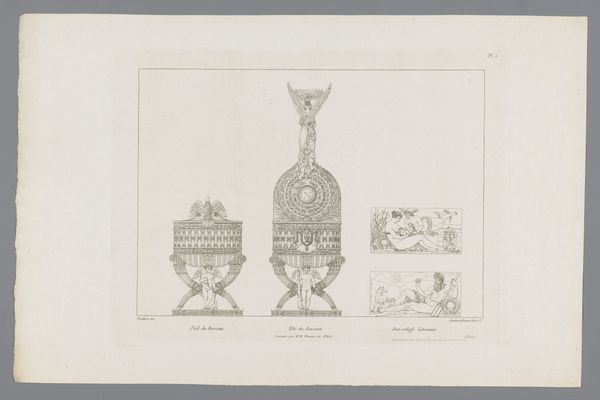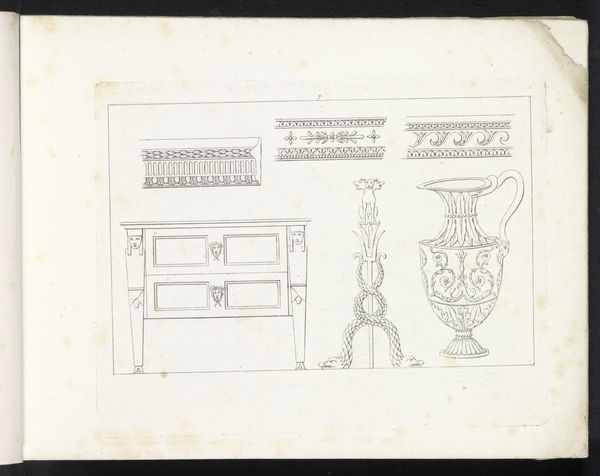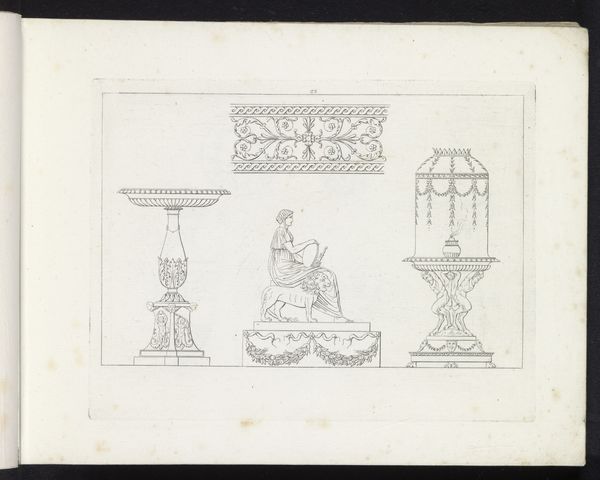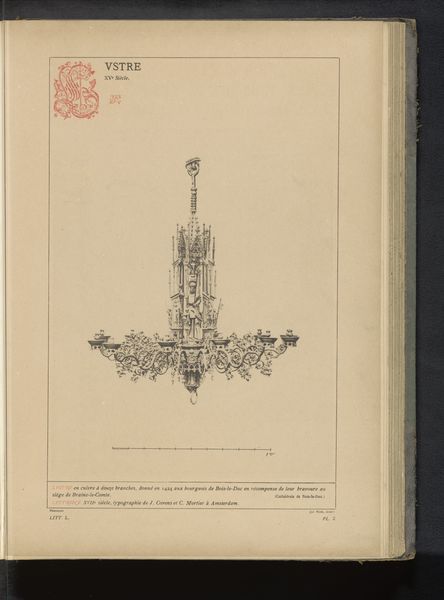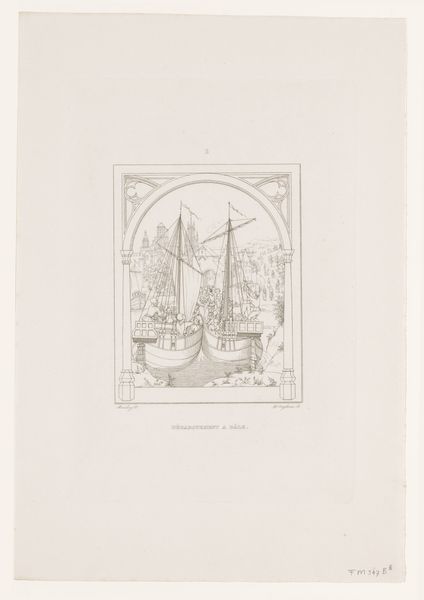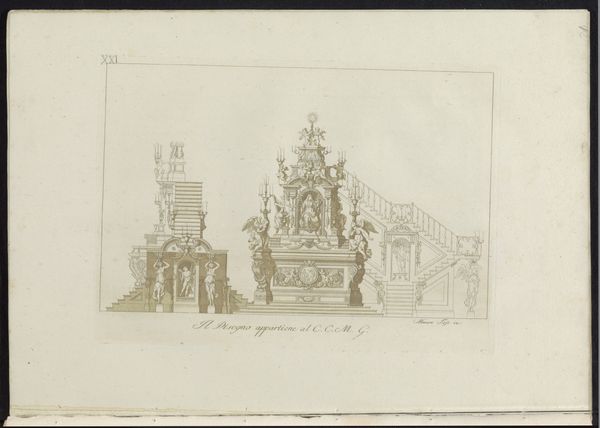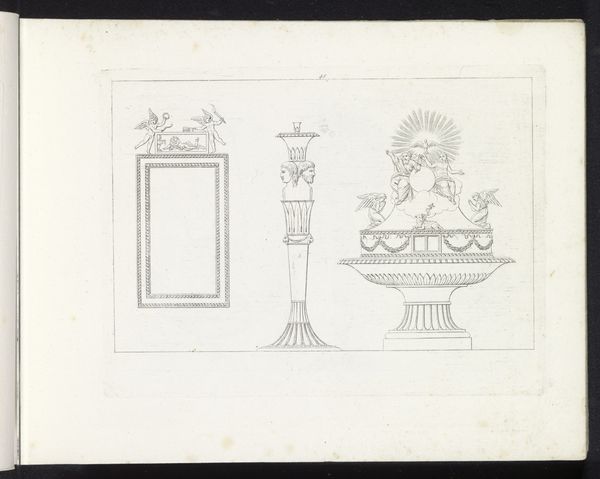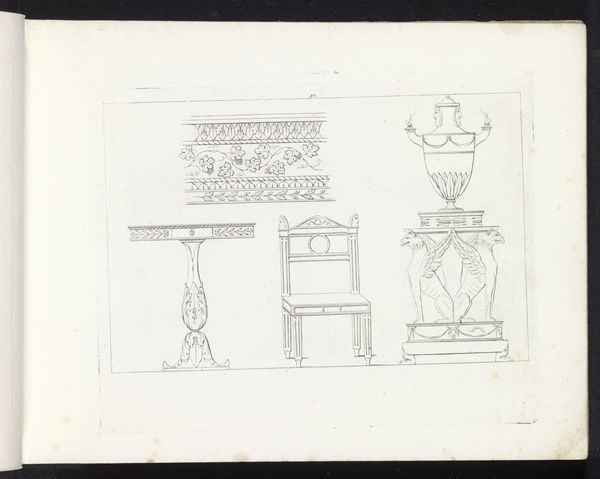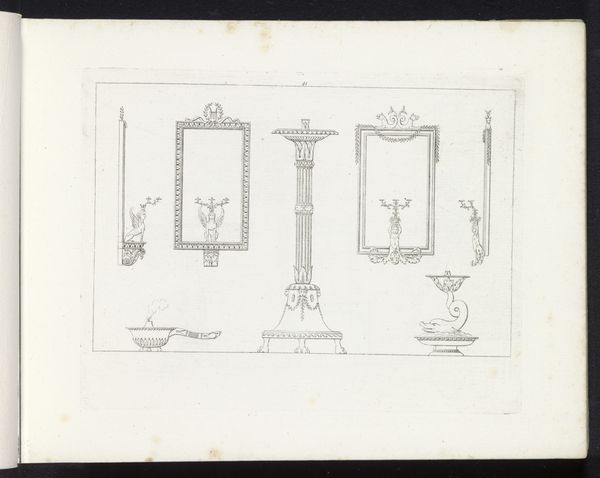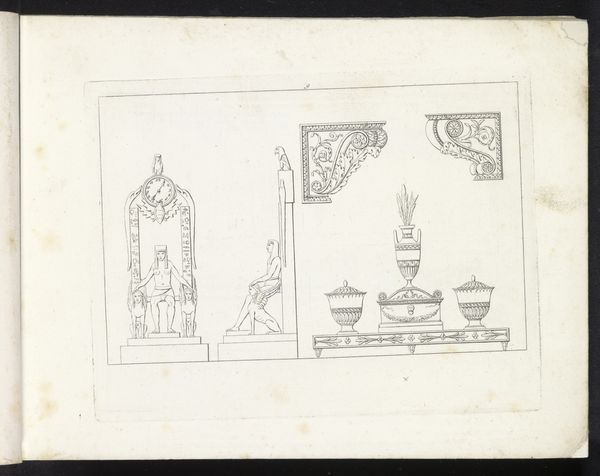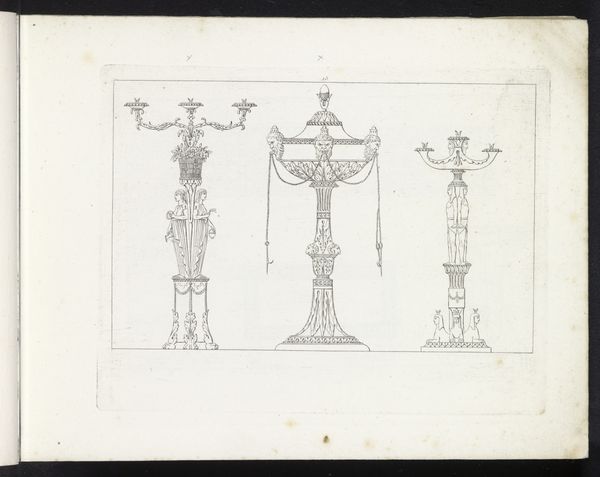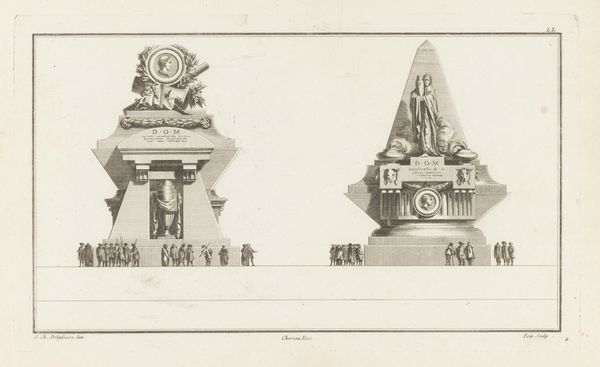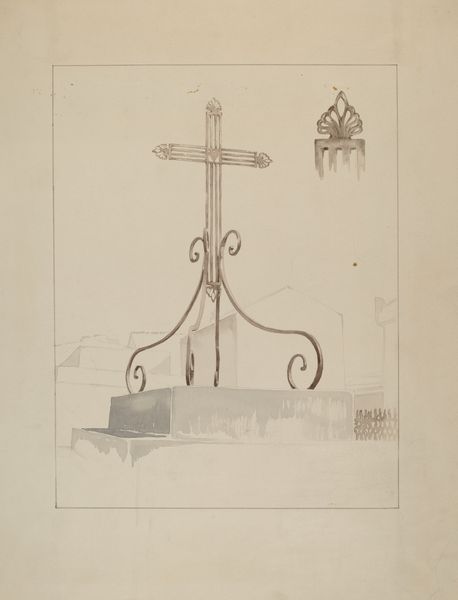
drawing, paper, pencil
#
drawing
#
neoclacissism
#
figuration
#
paper
#
pencil
#
decorative-art
Dimensions: height 239 mm, width 316 mm
Copyright: Rijks Museum: Open Domain
Curator: Gosh, that chair looks utterly uncomfortable, doesn't it? Pretty, mind you, in that frosty, removed way of another era, but all angles and no invitation to sink in and, you know, be. Editor: Indeed! What we're looking at is a drawing, pencil on paper, from 1811, titled "Dressing Table with Chair and Washbasin." Its maker, Adrien Louis Marie Cavelier, rendered it in meticulous detail. Curator: Dressing table is putting it mildly! The whole ensemble, the table with what looks like an elaborate candelabra perched on top and a precarious washbasin, is giving me wedding cake vibes. All frosting, no substance, visually rich, and yet…austere. The artist seems intent on design over human considerations, no? Editor: In its style, the piece echoes the broader embrace of Neoclassicism that marked the late 18th and early 19th centuries. Think of the recovery of Pompeii, of an obsession with antiquity that went hand-in-hand with imperial ambition under Napoleon, with new expressions of authority. It also speaks to a particular domestic aesthetic favored by elites. Curator: Ah, so, more aspirational, less practical, setting the stage, projecting…wealth? But the very *act* of drawing, and depicting it as a spare outline… does it undermine that grandiosity, lay it bare a bit? The fine pencil lines render it almost vulnerable, more suggestion than statement. Editor: Precisely! These drawings circulated among craftspeople and their wealthy clients. Such renderings played a crucial role in shaping tastes and standardizing production during a period when industrialization had barely begun. So, yes, design was central. Curator: I wonder about the people who dreamed this space up and, especially, those who then had to live in it! Can you imagine doing your hair at that pointy-legged, cold table, reflecting in the looking glass. What faces have stared back from it. What anxieties, and what exquisite hopes. Editor: A pertinent observation. To create that domestic spectacle—to orchestrate it— required a veritable army of workers in everything from furniture making to fabric production to cosmetics creation. One could read into this Cavelier drawing the traces of the broader societal transformations it participated in. Curator: Hmmm. The revolution captured in a makeup table! Okay, I'm on board. It does make one think. Editor: As all great artworks must, don't you think?
Comments
No comments
Be the first to comment and join the conversation on the ultimate creative platform.
